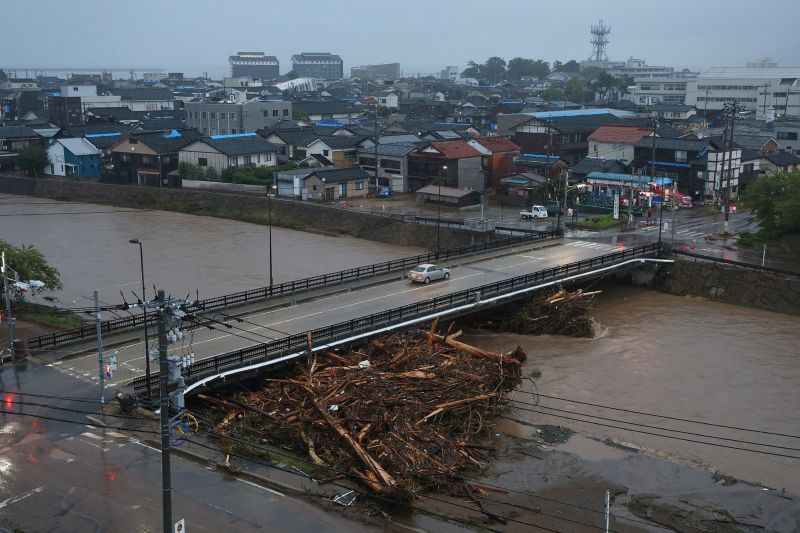Body:
In the heart of Japan lies a region still grappling with the aftermath of a disastrous earthquake. The devastation is immense, yet the resilience of its people is indomitable. However, an already formidable recovery process has been exacerbated by an unexpected adversity—torrential rain flooding the streets and uprooting life.
The region in question had just begun sighing in relief with the gradual stabilization following the seismic jolts when it found itself immersed in a deluge. The heavy rain, resulting from a weather phenomenon often associated with the region’s climate, usually lasts for five days and is crucial for farmers. However, the intensity this year was unprecedented leaving the streets underwater.
With the landscape defined by extensive flooding, the swollen rivers not only breaching their banks but also disgorging into homes and infrastructure. The result is widespread chaos, making it difficult for the region to get back on its feet post the earthquake. Travelling from one place to another is a chore in itself, with waterlogged streets acting as roadblocks designed by Mother Nature herself.
The inhabitants, with their recent memories of the earthquake still fresh, have been more equipped in responding to this natural disaster. Emergency services have been swift, with endless hours poured into rescue and aid efforts. Still, the severity of both natural calamities has tested their preparedness to its limits.
Damage from the earthquake has in several instances hastened the impacts of the rainfall. Cracks in the infrastructure, especially the buildings, have served as easy gateways for the flood to wreak havoc. Buildings left weak and vulnerable after the quake are now facing a second hit of destruction from the catastrophic deluge.
Moreover, the floodwaters are delaying crucial recovery and rebuilding efforts initiated in the wake of the earthquake. Reconstruction projects, which had begun giving a semblance of hope to the residents, are now on hold. The demolishing rain has washed away any progress made in these initiatives, only adding to the staggering losses faced by the region.
The flooding also poses an increased risk to the region’s economy which was already burdened after the earthquake. Disaster management necessitates a diversion of funds, which would otherwise be channeled into upliftment and development programs. Additionally, the floods have affected agriculture, an essential industry in the region.
As the rain waters slowly recede, the residents once again find themselves at the threshold of restoration, marred by another colossal tragedy. The path to recovery seems even more uphill and distant with the combined and multiplied impacts of the earthquake and the torrential rain, reflecting the reality of this double disaster.
The crisis mirrors the challenges facing many regions across the globe—cities and countryside alike—impacted by multiple natural disasters within a short span. It brings forth the critical importance of integrating climate resilience into infrastructure planning and building. The region stands as a testament to Japan’s resilience and sustained efforts to bounce back with renewed vigor, while it continues to grapple with challenges posed in succession by Mother Nature.




